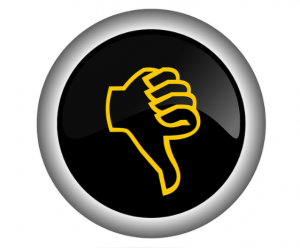Search engines, who take upon their shoulders the responsibility of providing people with information about topics based on queries they provided in their search box, are facing a problem called duplicate content. It is a type of content that appears on multiple websites across the web. Duplicate content can really trigger a problem because it makes search engines unable to figure out which URL to display in the search results.
Duplicate content is bad for the page that contains the original piece because it can hurt its rankings. But that’s not all – the problem will get even worse when people, in their effort to provide additional information about their topic, link to different websites that carry the same content.
There are two types of duplicate content. These are:
1. Onsite Duplicate Content
This refers to content that is published on two or more pages of the same website.
2. Off Site Duplicate Content
This happens when two or more websites publish exactly the same content.
Onsite duplication can be prevented or controlled by a website administrator or web developer while off site duplication can only be resolved by working with third-parties like a content marketing agency as well as the admins or owners of offending websites. Both onsite and offsite content duplication can have negative effects on your SEO. They’re actually one of the most prevalent problems on the web today.
What Makes Duplicate Content Bad for Your Website?

The best answer to this question is to first understand why having unique content is important.
First things first. Having unique content means holding information no one else on the web can offer sets your website apart from the rest. It is like holding something useful no other website has. If your site holds valuable information found nowhere else on the web, the URL of that page has the highest chance of topping the search results for that particular topic.
On the contrary, if you use the same content such as product or service description on multiple pages of the same website, or have this information published on other sites, your being unique is gone and you have lost your sheer advantage above the rest – as far as the search engines are concerned.
Granting that you have understood our topic based on the explanation above, let’s take a closer look at duplicate content, the problems it creates as well as their possible solutions:
Onsite Duplicate Content
Technically, onsite and off site duplicate content is the same as far as Google is concerned, but the search engine hates the former more because you, the website owner are supposed to have it under control.
If you analyze deeper into the issue, onsite content duplication generally originates from faulty website architecture or poor website development. It usually happens when web developers fail to abide by the best practices of building search-friendly websites. Such an act of neglect will result in self-competition and strip you of your opportunity to rank in search results.
How to Fix OnSite Duplicate Content

Generally, onsite duplicate content is easier to fix than off site duplication. The first thing you need to do to confirm the presence of onsite duplication is to conduct an inventory of your website. For sure you or someone in your team knows your website very well. If you notice some pages of your website have duplicate content, address the issue at once with professional help from reliable content marketing services.
Here are the most common steps you need to make when you discover duplicate pages on your website.
1. Redirect Duplicate Content
By setting up a 301 redirect from the page that contains copied content to the page that contains the original, you’ll be able to redirect duplicate content URLs to the right canonical URLs.
2. Use a “rel=canonical Tag
The “rel=canonical” tag lets search engines know which version of the identical pages you want it to show in the search results.
3. Use Meta Tags
Use meta tags to let search engines know which of your site’s pages shouldn’t be indexed.
4. Expand Copied Pages
Expand pages with copied content to make them unique.
5. Check Guest Posts before Publishing Them
If you accept content from guest writers, be sure to check their content for uniqueness before publishing them on your site. Having duplicate content is already an issue, but plagiarism can have more serious consequences.
6. Direct Google How To Index Your Site
The good thing about Google is it gives you the freedom to choose which pages in your site should be crawled and which should be left alone. You can use it to prevent the search engine from indexing pages with duplicate content.
Off Site Duplicate Content
There are three primary sources of off site duplicate content. These are:
1. Third-party Content that You Republish on Your Own Website
In most cases, these are generic product descriptions provided by the manufacturer. Duplicate content may be an “eyesore” to Google, yet it may be necessary for some website owners that publish product descriptions provided by manufacturers.
Today, there are thousands of online retailers that sell exactly the same products and they use identical product descriptions. While this can qualify as an exception to Google’s rules on content, it can still put the search engine into trouble differentiating one content from the rest, and it can affect your visibility in search results pages.
How to Fix this Issue
If you are a retailer and you really want to stand out in the search game, you should make extra efforts to rewrite your product descriptions to make them unique. You know how it works: a page with unique content will certainly have an advantage over pages that have identical content. It will certainly make you more visible not only to Google but to your customers as well.
2. Your Content that a Third-party Site Republished with Your Approval
It happens when you submit your content for distribution by way of article directories or content syndication sites.
When link building was in its early stages, most business website owners were republishing content on article directories or ezines to promote their website. But when Google emphasized the importance of content quality and started cracking down on link schemes, republishing and content distribution became a thing of the past.
From the SEO viewpoint, publishing the same content on another site may not be a good move but it can be effective as a marketing strategy. This is especially true nowadays since owners of other sites will claim unique rights to any particular content you want to publish on their website. They do this to prevent multiple versions of that content from devaluing the information their site is trying to offer.
How to Fix this Issue
The good news is – Google has improved a lot in terms of assigning rights to content originators. Because of this development, you can actually reuse content on your personal website. Many publishers today have allowed authors to reuse the content as long as they are given exclusive rights to it. While it can still cause a content duplication problem, it will have a minor impact and the first published version will still be credited as the canonical version.
3. Content that Someone Stole from Your Site and Republished It
This happens when a content scraper steals content from your website and republishes it as its own. A content scraper is someone who steals original content from a website and posts or publishes that stolen piece on their own site for the purpose of attracting traffic and hoping that visitors will click on their ads.
Content theft is a lingering problem. In fact, 29% of sites are facing duplicate content issues. There’s really not much you can do about it other than reporting a copyright infringement to Google or ignore it hoping that Google will see the difference between your site and the site that scraped your content. Unfortunately, none of these two ways can assure you of a definite resolution to your problem. As a matter of fact, there is lots of scraped content that actually ranks higher than the original.
How to Fix this Issue
There’s a way to minimize the effects of scraped content. Be sure to use absolute links for links that point back to your website. This will allow people to get back to your website if the content thief isn’t careful enough not to check your content before publishing it on their site.
You may also add a canonical tag back to your source page to let Google see you as the originator if a scraper grabs that code. Seek help from experienced providers of content marketing services to make this tactic work for you.
Content duplication is an easy way some people use to populate their website at the least cost and effort, but at the expense of honest business owners.
But as a legit website owner, you are investing money on keyword research, digital marketing plans, and content strategy to get your business found in the digital market. As such, don’t allow competitors to snatch your business opportunities because of duplicate content issues. Let an experienced content marketing agency be your partner in ensuring the uniqueness and quality of your content.
Call Muzeum Marketing at (321) 341-9090.







